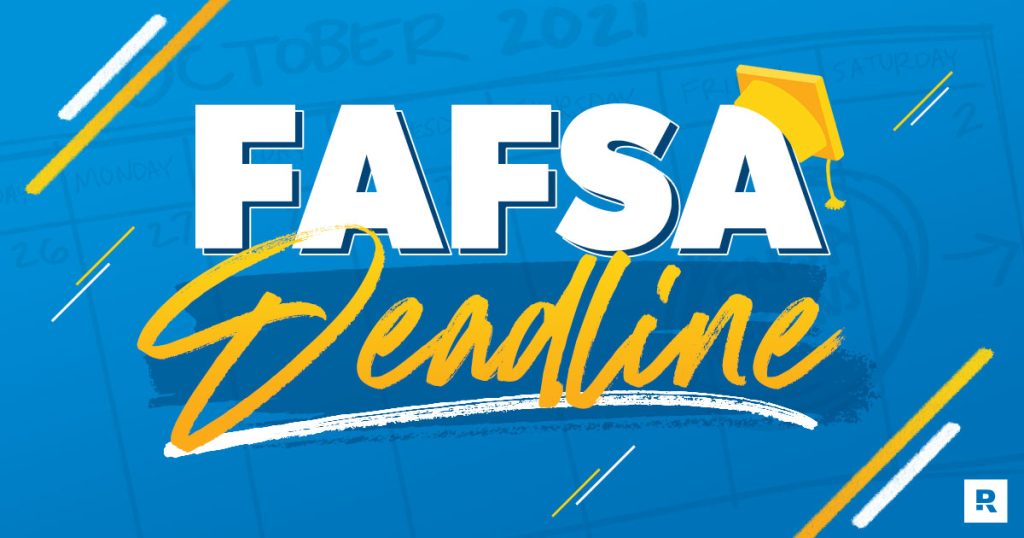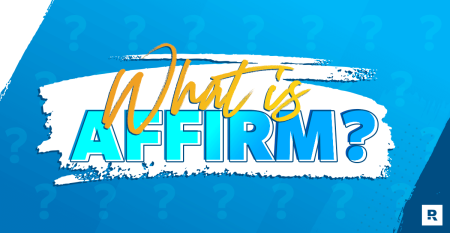If you want to qualify for financial aid to help pay for college, you’ll need to submit the Free Application for Federal Student Aid (FAFSA).
The FAFSA is a free application that the government and colleges use to decide how much money to give you for school. You can apply each school year for all kinds of federal financial aid—including scholarships, grants, work-study jobs and student loans (although you should stay far, far away from any student loans).
The sooner you fill out the FAFSA, the better! Not only is there a limited amount of money to go around, but there’s also a ticking clock when it comes to filling out the form. In fact, there are several FAFSA deadlines you need to be aware of: the federal deadline, the state deadline and the college deadline.
When Is the Federal FAFSA Deadline?
The federal deadline for submitting the FAFSA is June 30—the last day of the academic year. That means you can fill out the FAFSA for this academic year (2023–24) until June 30, 2024. And if you’re looking even further ahead, the last day to file for federal financial aid for the 2024–25 academic year will be June 30, 2025.
We know what you’re thinking: The school year is over by then . . . what’s the point of applying that late? It’s true, you’ll probably have already missed out on most of the financial aid you could’ve gotten for the academic year. But you can still qualify for federal grants that could retroactively cover what you’ve already paid for the fall and spring semesters. And some schools might let you use some of the money you receive to pay for summer classes.
But don’t wait until the last minute to fill out the FAFSA! The longer you wait, the more likely you are to miss out on scholarships and grants that can help you pay for college. In other words, don’t treat your FAFSA like a term paper you wait to start until the day before it’s due.
|
Academic Year |
FAFSA Start Date |
Federal FAFSA Deadline |
|
2023–24 |
October 1, 2022 |
June 30, 2024 |
|
2024–25 |
December 31, 2023 |
June 30, 2025 |
What happens if I miss the June 30 federal deadline?
If you miss the deadline, you’re no longer eligible to submit your FAFSA for that academic year. So, we can’t stress this enough: Apply as early as you can!
What About State FAFSA Deadlines?
On top of the aid you can get from the federal government, the information you submit through your FAFSA also determines what financial aid you get from your home state. Each state has its own deadline—but it’s usually much sooner than June 30.
Some states have a hard deadline, while others strongly suggest you apply as soon as possible. But since many states don’t have much financial aid money to go around, they will award financial aid on a first-come, first-served basis. And once those funds are gone, they’re gone. In other words: Submit your FAFSA as soon as possible.
You can find out your state’s FAFSA deadline, as well as what else might be required to qualify for financial aid, on the Federal Student Aid website. But many states will tell you to go straight to your school’s financial aid office for any deadline information. (Side note: Some states will ask you to fill out additional forms, so make sure you do your homework on what’s required in your state.)
Do Colleges Have Their Own FAFSA Deadlines?
Yes, believe it or not, colleges have their own deadlines too. After all, they have their own scholarships and grant money to give out.
OUT NOW! Watch Borrowed Future on Amazon Prime Video, AppleTV and Google Play.
Many FAFSA due dates for colleges are priority deadlines. That means you’ll be considered for the most money from that school if you apply early and on time. Many colleges have this date posted clearly on their financial aid webpages, so that’s a good place to start. If you’re having trouble finding those deadlines, give the school’s financial aid office a call.
Again, you’ll have the best odds of getting some free money from the school if you submit your application as soon as you can!
When Can I Start Applying for the FAFSA?
October 1 is usually when you can start applying for financial aid for the next academic year. Right now, you can still fill out the FAFSA for the 2023–24 academic year until June 30, 2024.
The FAFSA for the 2024–25 school year (which is a newly redesigned form) got pushed back to December 31, 2023. But it’s now available! So, if you’ll be taking college classes next fall, you can apply for financial aid until June 30, 2025. The new form is supposed to be easier to fill out and should allow more students to qualify for federal Pell Grants.
Remember, file your FAFSA as close to the start date as you can! The sooner you file, the more likely you are to qualify for scholarships, grants and other types of financial aid. If you wait too long to file, you’ll end up with whatever money is left over after everyone else gets their share—which probably won’t be much.
Block off some time and set a reminder on your phone to apply. Do whatever you have to so you don’t miss out on any funds you qualify for!
Why You Should Fill Out the FAFSA
Like we mentioned earlier, the FAFSA can help you qualify for two main types of financial aid: scholarships and grants, and student loans. Make sure you understand what you’re saying yes to—and what you should say no to.
Say yes to scholarships and grants (like the Pell Grant and FSEOG Grant). That’s free money! Work-study programs also give you an opportunity to earn a paycheck from an on-campus job to help you with tuition.
For the 2023–24 academic year, students who qualified for a Pell Grant award received anywhere between $750 and $7,395.1 That’s a good chunk of change, but not everyone takes advantage of it.
In fact, 44% of the 2022 high school class didn’t complete the FAFSA, leaving $3.58 billion in Pell Grant awards unclaimed.2 That’s free money they would’ve qualified for . . . just left on the table because they didn’t take the time to fill out the form. Don’t make the same mistake!
You also need to say no to any student loans that come your way. Despite what anyone might tell you, student loans aren’t really “aid”—they’re a trap that could keep you in debt for years or even decades after you graduate. And a Ramsey Solutions research study found that over half of Americans regret taking out student loans to pay for their education.
Plus, student loans are more than just a financial burden. They rob you of your peace and your future. But it doesn’t have to be that way! You deserve to leave college with a degree and the freedom to choose your next step—not with debt holding you back.
You Can Go to College Debt-Free
You don’t have to take out student loans to go to college. It’s completely possible to cash flow your education. And the scholarships and grants you could receive from federal, state or college funding through FAFSA play a huge role in helping you graduate from college debt-free!
Even if you can’t cover the full cost of tuition with the financial aid you get from the FAFSA, there are still ways to pay for college—ones that won’t have you enslaved to payments years after you graduate.
You might need to go to a more affordable school, attend community college first, live off campus, or work while you’re in school. We know that may not sound like the college experience you had in mind, but these sacrifices pay off big-time.
Taking the time to explore all your options will save you a lot of money and stress. The main thing is that you get a useful degree without going into debt, and you can do that no matter where—or how—you go to school.
And while you’re waiting to see how much FAFSA aid you’ll get for the upcoming year, use this time to continue saving up for school. The EveryDollar budgeting app helps you make a plan for your money every month, so you can spend less and save more for the things that matter—like tuition, textbooks and other school expenses!
It’s never too early (or late) to set yourself up for financial success. So, go ahead and create your free budget today!
Read the full article here










